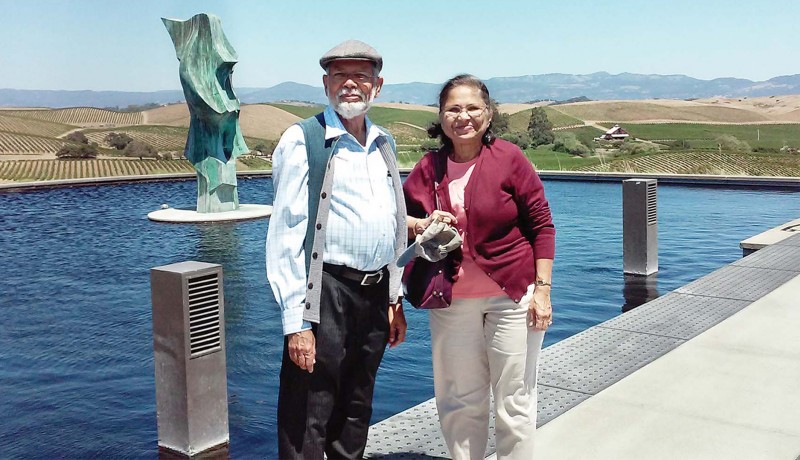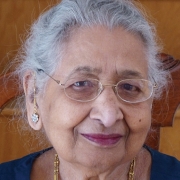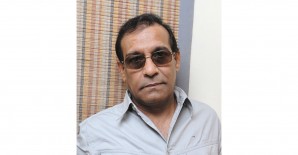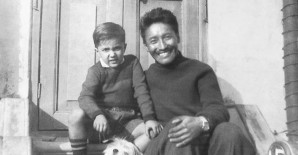
Columns

In the ‘little Maharashtra’ in Simi Valley, the Mates bond with their Marathi brethren over movies, music, food and art, writes Kamla Mankekar.
Meet Shaila and Srinivas Neelkanth Mate. They have been living in the US for more than half a century. Now California, more than Pune—their place of birth—is their homeland.
The Mates’ is a story of romance, adventure and steadfastness. While recalling her first meeting with Srinivas, Shaila blushes like a teenager. She was 19 when she came to the US on a fellowship from the Experiment in International Living. Srinivas was working as a trainee in Seattle after obtaining a degree from the Manhattan College of Architecture in Arkansas. Shaila was based in New York. One of her relatives, who was acquainted with Srinivas, wrote to him requesting that he contact Shaila to see if she needed help. They spoke over the phone, and he decided to meet her. “I could not ask her to come to Seattle to my bachelor pad,” says Srinivas, reminiscing how he flew to New York to meet her.
It was love at first sight; the bubbly Shaila captured Srinivas’s heart just as she fell for his good looks. Srinivas extended his weekend visit to take her around the fascinating city. They kept meeting, and Srinivas proposed to her. “We wrote to our parents seeking their approval,” aver the couple. As both hailed from the Chitpavan Brahmin community, the families were willing. Before Shaila left the US, she and Srinivas got engaged. That was in 1964. Srinivas was still on a student visa. He applied for his Green Card and returned to Pune to get married. He came back to Seattle for a job and a long, post-wedding courtship began across the continents.
Telephones were not common those days, nor international connections easy, recalls Shaila. One had to book a call and wait for hours to get connected. Often the connection was poor. “We had to be content with just hearing each other’s voice without the chance of any real conversation,” says Shaila. Letters were the main means of communication. Now, at 74, Srinivas is semi-retired. A specialist in cytogenetics, the 71 year-old Shaila too has retired as a scientist in a pharmaceutical laboratory. Though Srinivas still takes up consulting jobs, the focus is more on pursuing hobbies and meeting friends. The Mates have two children; daughter Kalais is married to an American of Irish descent and lives in a town a two-hour drive from her parents’ home in Simi Valley; son Manoj has a law degree and teaches at University of California (UC) – Irvine.
Have they ever experienced racial discrimination during their long years in this country? I asked. “No, not personally,” replied Srinivas, who has held jobs in various parts of America. Light-skinned and lighteyed, typical of Chitpavans, he and Shaila have been accepted even in the colour-conscious Southern states. However, when he was working in St Louis, one of his friends from southern India, with darker skin, was not so lucky; most landlords did not wish to rent property to him. In some restaurants he was told he could buy food but not sit there to eat! Srinivas also recalls African-Americans being denied service by the whites there. He specifically remembers a barber refusing to give a haircut to an African-American as he was scared of losing customers if he served a person of colour. However, Srinivas was quick to point out that it was not so in other parts of the country.
The Mates live a busy life in retirement. Srinivas is on the editorial board of Ekta, a literary quarterly magazine in Marathi, published from Toronto, Canada; he is a regular contributor, writing short stories and poems. He is also an active member of the Lions Club and often goes to San Francisco to attend meetings and participate in various activities arranged by them. Srinivas, who took his first degree from the J J School of Arts and Architecture in Mumbai, has an abiding love of arts, especially painting.
It seems Maharashtrians like to take their culture along wherever they go; there are active Maharashtra Mandals in different parts of the US, and the Mates travel all over the country to participate in them. Recently they had been to a four-day bi-annual session of the California Mandal held at Anaheim, a resort about an hour-and-a-half’s drive from where they live. About 4,000 people attended the meet. It was a rich feast of dance, music, plays, literature, good food and ‘brotherhood’. In Simi Valley, too, there is a Marathi-speaking group that meets regularly and organises concerts and screening of Marathi films. “Such events provide an opportunity for our children to meet and develop close community ties and friendships,” says Shaila.
I asked them if they ever contemplated returning to India. Yes, they did. The love for homeland and a desire to be among their own people often made them consider that option. However, during one of their trips to India they met Godbole, a friend, who had returned to India for these very considerations but regretted the decision. His children did not fit in the Indian school system and they became the butt of snide remarks as other students called them “amrikan firangis”. They were made fun of particularly when they made an effort to speak in Marathi. As for the parents, they found that work ethics had changed during the decades they had been away from the country.
Srinivas also cited the case of another friend who had returned so that he could be a partner in the nation’s progress. Laudable desire indeed! But he was disappointed. His daughters were miserable in their new environment, while he found setting up business rather difficult. “Nothing can be achieved unless you grease the palms of bureaucracy,” he rued. Projects and proposals were shelved for no plausible reason. “You either abandon your efforts or succumb to the ‘system’,” he said.
Such a situation could hardly be acceptable to the Mates. So they set about creating the next best alternative: a ‘little Maharashtra’ in Simi Valley.
Mankekar is the author of Breaking News: A Woman in a Man’s World, which chronicles her experiences as a pioneering woman journalist in India
Featured in Harmony — Celebrate Age Magazine June 2016
you may also like to read
-
Mental workout
Mukul Sharma tells you how to keep those grey cells ticking Everyone will ultimately lose his or her brain….
-
Helpline
Dr Harshbir Rana answers your queries on personal and social issues related to ageing, elder care and intergenerational relationships ….
-
Off the cuff
Raju Mukherji pays tribute to his first hero, Tenzing Norgay, an exemplary mountaineer Darjeeling, 1955. Dr ‘Pahari’ Guha Mazumdar….
-
Yoga RX
Shameem Akthar shows ways to control debilitating ankle pain through regular practice Ankle pain is so common and prevalent….








